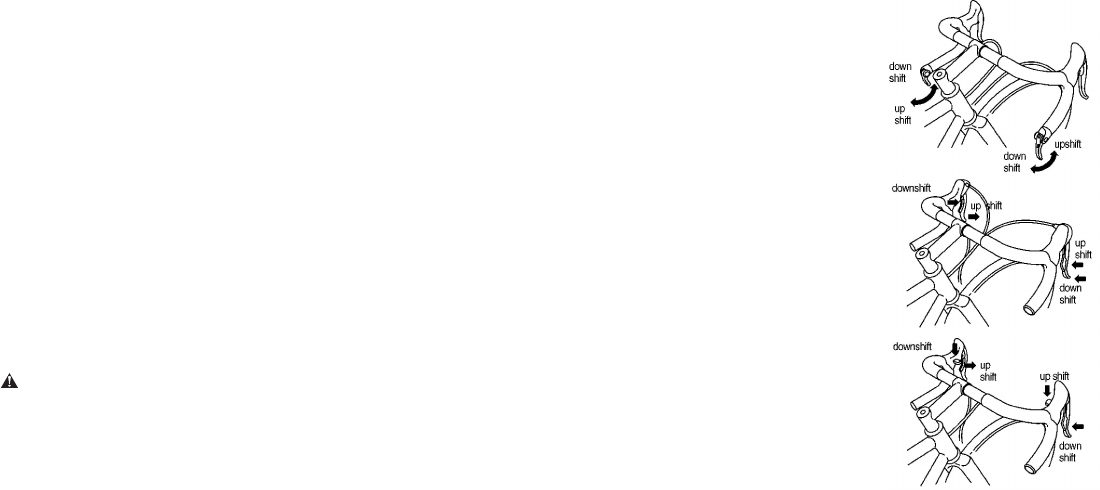
a. Shifting Gears
The different types of shifters and their operation are illustrated in figures J throughO. Identify the shifters
on your bike before reading on.
The vocabulary of shifting can be pretty confusing. A downshift is a shift to a “slower” gear, one which is
easier to pedal. An upshift is a shift to a “faster” harder to pedal gear. What’s confusing is that what’s
happening at the front derailleur is the opposite of what’s happening at the rear derailleur (for details, read
the instructions on Shifting the Rear Derailleur and Shifting the Front Derailleur below). For example, you
can select a gear which will make pedaling easier on a hill (make a downshift) in one of two ways: shift
the chain down the gear “steps” to a smaller gear at the front, or up the gear “steps” to a larger gear at the
rear. So, at the rear gear cluster, what is called a downshift looks like an upshift. The way to keep things
straight is to remember that shifting the chain in towards the centerline of the bike is for accelerating and
climbing and is called a downshift. Moving the chain out or away from the centerline of the bike is for
speed and is called an upshift.
Whether upshifting or downshifting, the bicycle derailleur system design requires that the drive chain be
moving forward and be under at least some tension. A derailleur will shift only if you are pedaling forward.
CAUTION: Never move the shifter while pedaling backward, nor pedal backwards after having moved
the shifter. This could jam the chain and cause serious damage to the bicycle.
b. Shifting the Rear Derailleur
The rear derailleur is controlled by the right shifter.
The function of the rear derailleur is to move the drive chain from one gear sprocket to another. The smaller sprockets on the gear
cluster produce higher gear ratios. Pedaling in the higher gears requires greater pedaling effort, but takes you a greater distance with
each revolution of the pedal cranks. The larger sprockets produce lower gear ratios. Using them requires less pedaling effort, but
takes you a shorter distance with each pedal crank revolution. Moving the chain from a smaller sprocket of the gear cluster to a larger
sprocket results in a downshift. Moving the chain from a larger sprocket to a smaller sprocket results in an upshift. In order for the
derailleur to move the chain from one sprocket to another, the rider must be pedaling forward.
c. Shifting the Front Derailleur:
The front derailleur, which is controlled by the left shifter, shifts the chain between the larger and smaller chainrings. Shifting the
chain onto a smaller chainring makes pedaling easier (a downshift). Shifting to a larger chainring makes pedaling harder
(an upshift).
fig. M
fig. N
fig. O
27


















